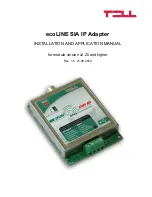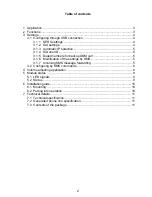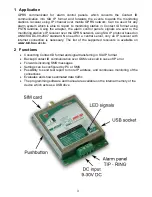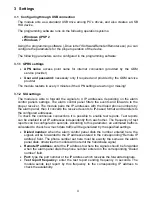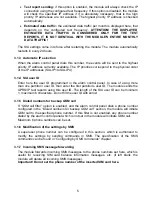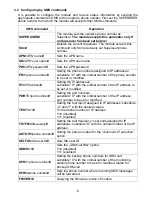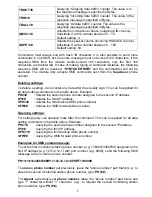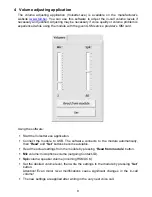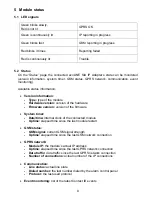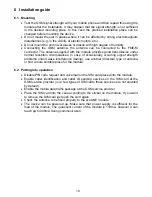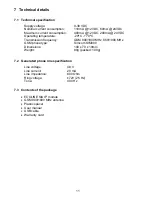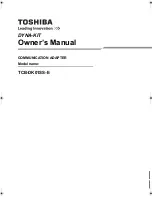
10
6 Installation guide
6.1 Mounting
Test the GSM signal strength with your mobile phone and then repeat this using the
module after the installation. It may happen that the signal strength is not sufficient
in the desired mounting place. In this case the planned installation place can be
changed before mounting the device.
Do not mount the unit in places where it can be affected by strong electromagnetic
disturbances (e.g. in the vicinity of electric motors, etc.).
Do not mount the unit in wet places or places with high degree of humidity.
Connecting the GSM antenna: the antenna can be connected to the FME-M
connector. The antenna supplied with the module provides good transmission under
normal reception circumstances. In case of occasionally occurring signal strength
problems or/and wave interference (fading), use another (directed) type of antenna
or find a more suitable place for the module.
6.2 Putting into operation
Disable PIN code request and voicemail on the SIM card placed into the module.
Enable caller identification and caller ID sending services on the SIM card at the
GSM service provider (on a few types of SIM cards these services are not enabled
by default).
Enable the mobile data traffic package at the GSM service provider
Place the SIM card into the case according to the sticker on the module. If you want
to remove the SIM card just push the card again.
Check the antenna to be fixed properly to the ecoLINE module.
The device can be powered up. Make sure that power supply is sufficient for the
load of the module. The quiescent current of the module is 110mA, however it can
reach up to 400mA during communication.

